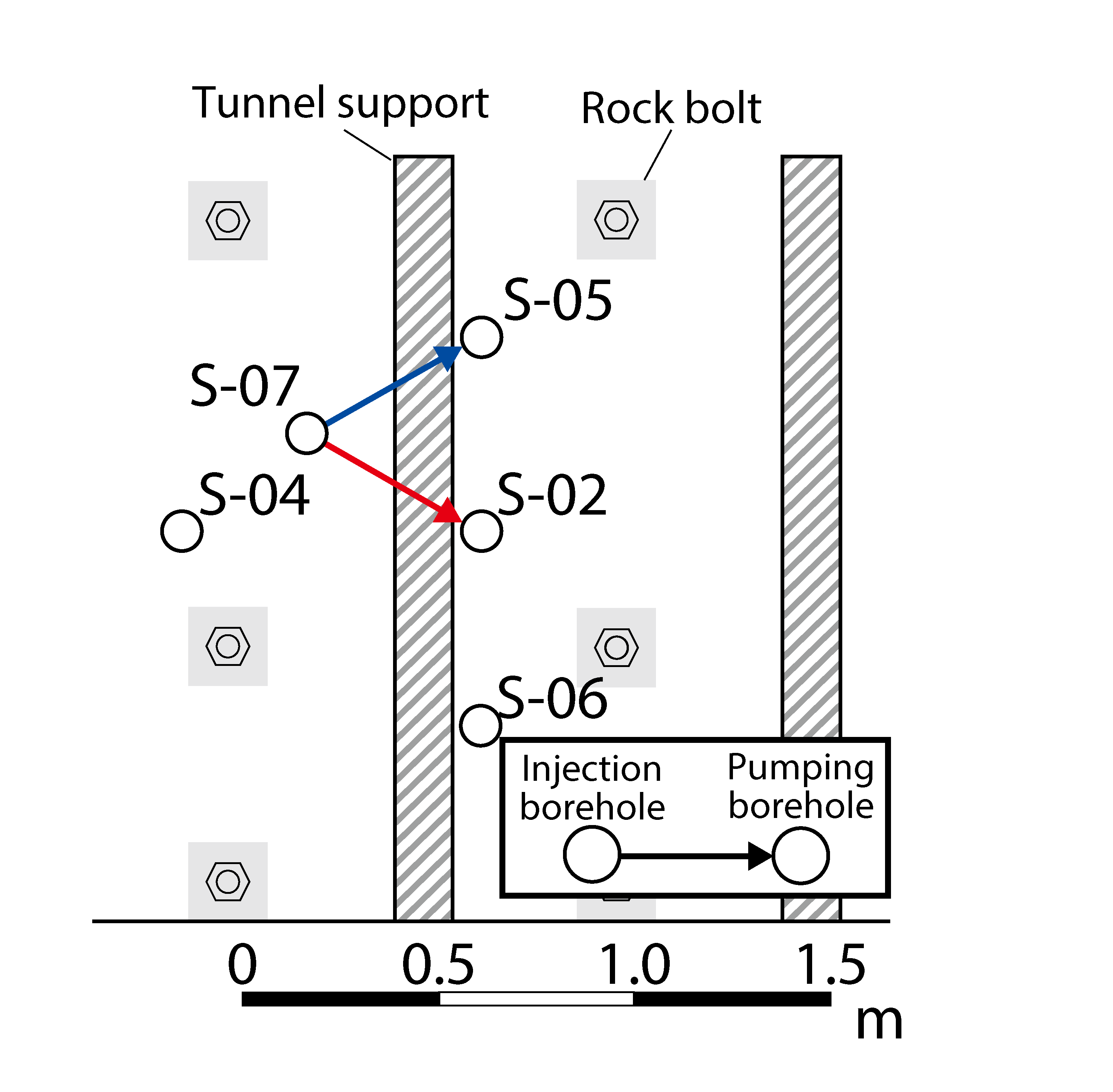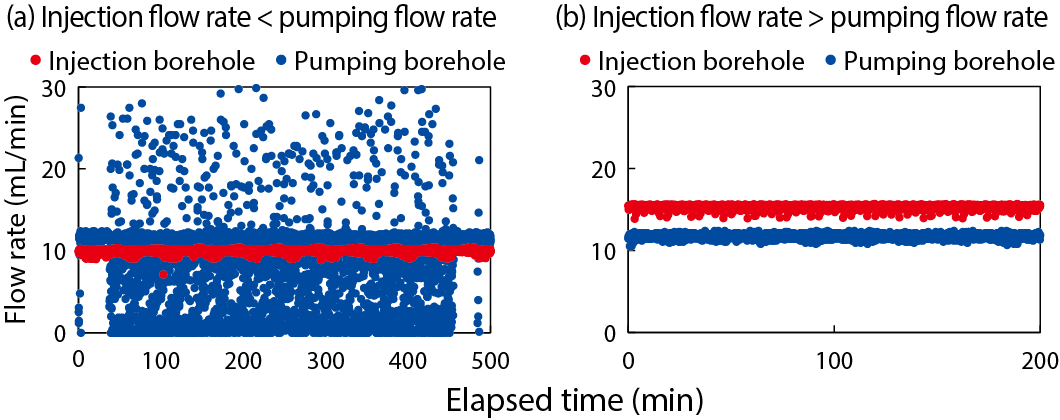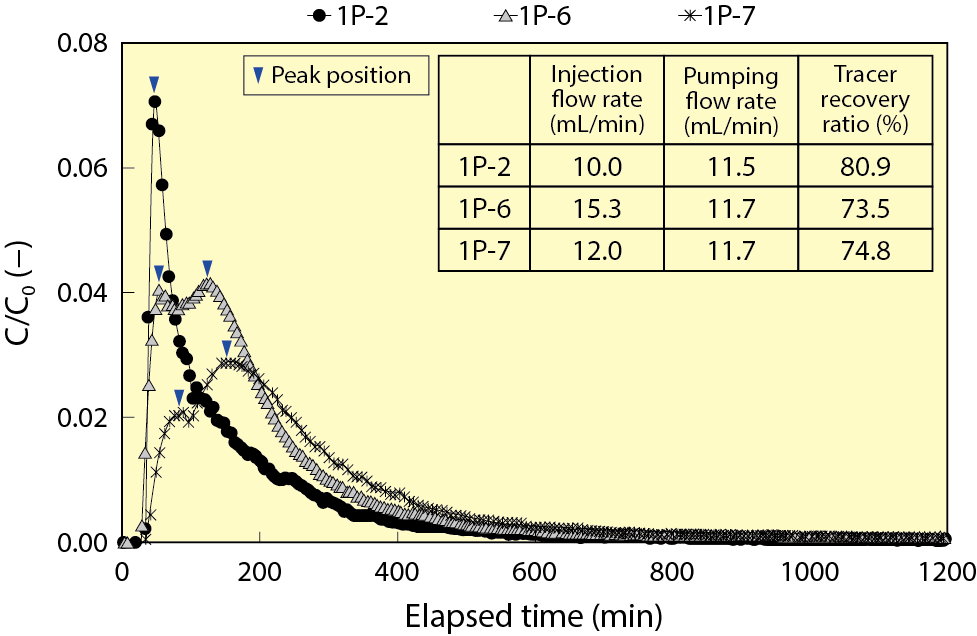
Fig. 8-15 Layout of tracer migration tests

Fig.8-16 Relationship between the test condition and degassing

Fig. 8-17 Relationship between the test condition and the tracer recovery ratio
In situ tracer tests are valuable to directly evaluate the solute transport phenomena in a rock mass under field conditions (e.g., groundwater flow, groundwater chemistry). However, few in situ tracer tests focused on fractures in sedimentary rocks have been conducted thus far. Therefore, it is necessary to develop techniques for conducting in situ trace tests and to obtain the input data of mass transport analyses for the safety assessment of geological disposal.
In situ tracer tests with pore pressure change have to be conducted while reducing the degassing, which results in flow paths being unsaturated because methane and carbon dioxide, which are dissolved in groundwater in a pressurized environment around mudstone in the Horonobe Underground Research Center, are degassing when pressure released. The tracer recovery ratio, which is a quality indicator for tracer tests, should also be made as large as possible to ensure a good quality of tests. As the test conditions of the injection flow rate and the pumping flow rate were varied, in situ tracer tests and preliminary tests using water without tracers were performed. We evaluated the effects of the test conditions by observing the degassing occurrence and the tracer recovery ratio. The layout of these tracer tests is shown in Fig.8-15.
Results of the preliminary test showed that the flow rate in a pumping borehole varied widely. This is a result of measurement errors caused by the gas bubble penetration degassing from the groundwater when the pumping flow rate (●) is larger than the injection flow rate (●), as shown in Fig.8-16(a).
On the other hand, these variation do not occur when the injection flow rates are larger than the pumping flow rates (Fig.8-16(b)). Therefore, an injection flow rate larger than that of the pumping flow rate leads to a reduction in the effects of degassing. However, the results of tracer tests (conducted using uranine) with pumping flow rates larger than injection flow rates (1P-2), show good tracer recovery ratios (Fig.8-17). These results are better than those obtained by tests of 1P-6 and 1P-7, which are conducted with injection flow rates larger than the pumping flow rates. The lower tracer recovery ratios of 1P-6 and 1P-7 are due to tracer migration, which results from a large injection flow rate and occurs via larger flow paths. Therefore, these results reveal that, to simultaneously reduce degassing and increase tracer recovery in tracer tests in groundwater saturated with gasses, an injection flow rate slightly larger than the pumping flow rate is ideal.
Based on this study, we established a method of in situ tracer tests which targets fractures in mudstone flowing in gas-saturated groundwater. This method enables a reduction of the effects of degassing and provides high-quality data.